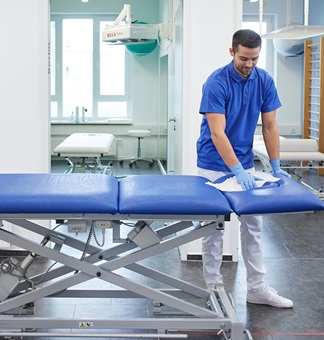5 moments of surface disinfection



Since its first description in Japan in 2009, a continuous increase in the number of Candidozyma auris cases has been observed worldwide [1,2]. The often multidrug-resistant yeast Candidozyma auris challenges hygiene experts around the world. The pathogen can trigger infections that are hard to treat; ill and immunosuppressed patients are at particular risk. The US federal agency CDC (Centers for Disease Control and Prevention) explicitly warns against this yeast, since it is resistant to many common antifungal drugs (e.g. fluconazole) and is difficult to detect by standard laboratory methods [3]. Among other things, this was a reason for the WHO to classify C. auris in the ‘critical group’ of fungal pathogens in 2022 [4].
In 2024, Candida auris and related species were assigned to the new genus Candidozyma based on detailed phylogenomic and comparative genomic analyses [5].
Existing data suggests that in hospitals C. auris may spread in patterns that are similar to those of methicillin-resistant Staphylococcus aureus (MRSA). For prevention of transmission and outbreak it is therefore important to correctly identify C. auris and to apply targeted hygiene measures [6,7].
C. auris may elicit ear, surgical site and urinary tract infections. If the yeast enters the bloodstream, also fatal bloodstream infections can occur.
Transmission of C. auris occurs through direct contact with contaminated persons or through indirect contact with contaminated objects. Medical devices, objects, and surfaces in the direct patient environment play special role [4]. C. auris is a particularly environmentally stable yeast: on inanimate surfaces, the pathogen can survive for up to three weeks [8].

Do you have questions regarding C. auris and the choice of the adequate disinfectant? We will gladly help you!
Click here to view products with yeasticidal spectrum of activity.
Sources:
Use disinfectants safely.
Always read the label and product information before use.

Danger
H242 Heating may cause a fire.
H314 Causes severe skin burns and eye damage.

Danger
H302 Harmful if swallowed.
H314 Causes severe skin burns and eye damage.
H410 Very toxic to aquatic life with long lasting effects.